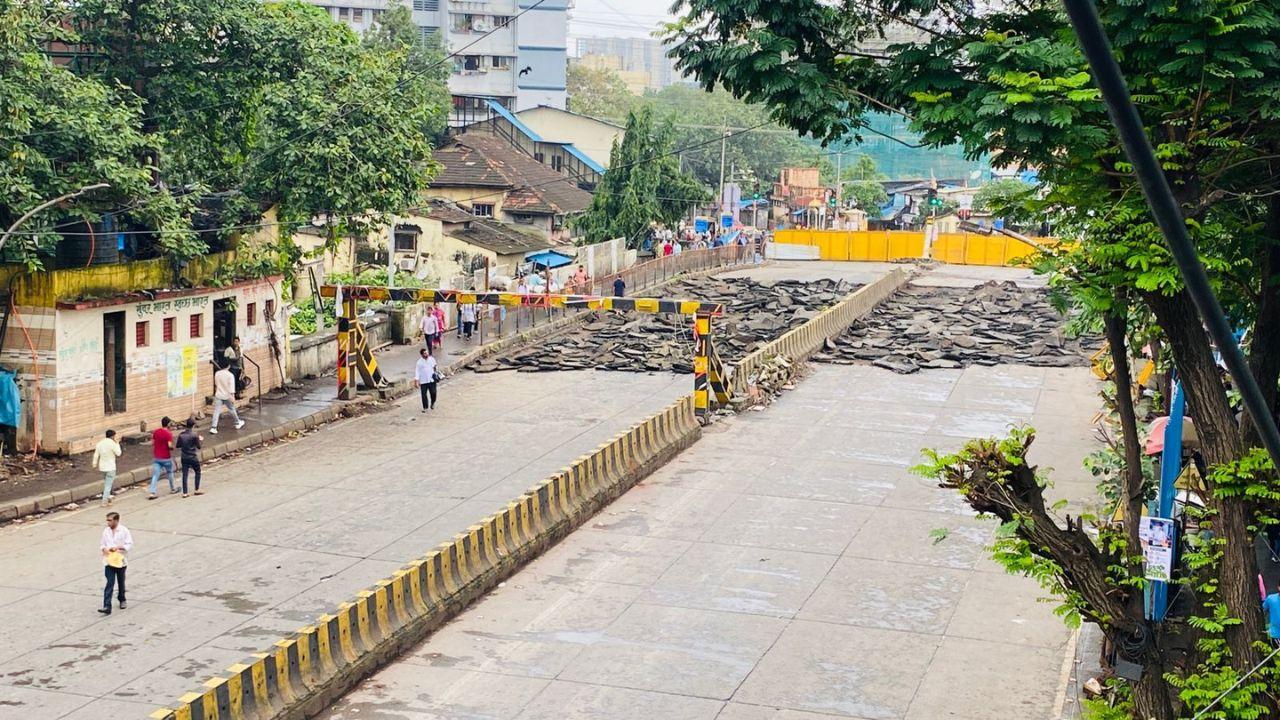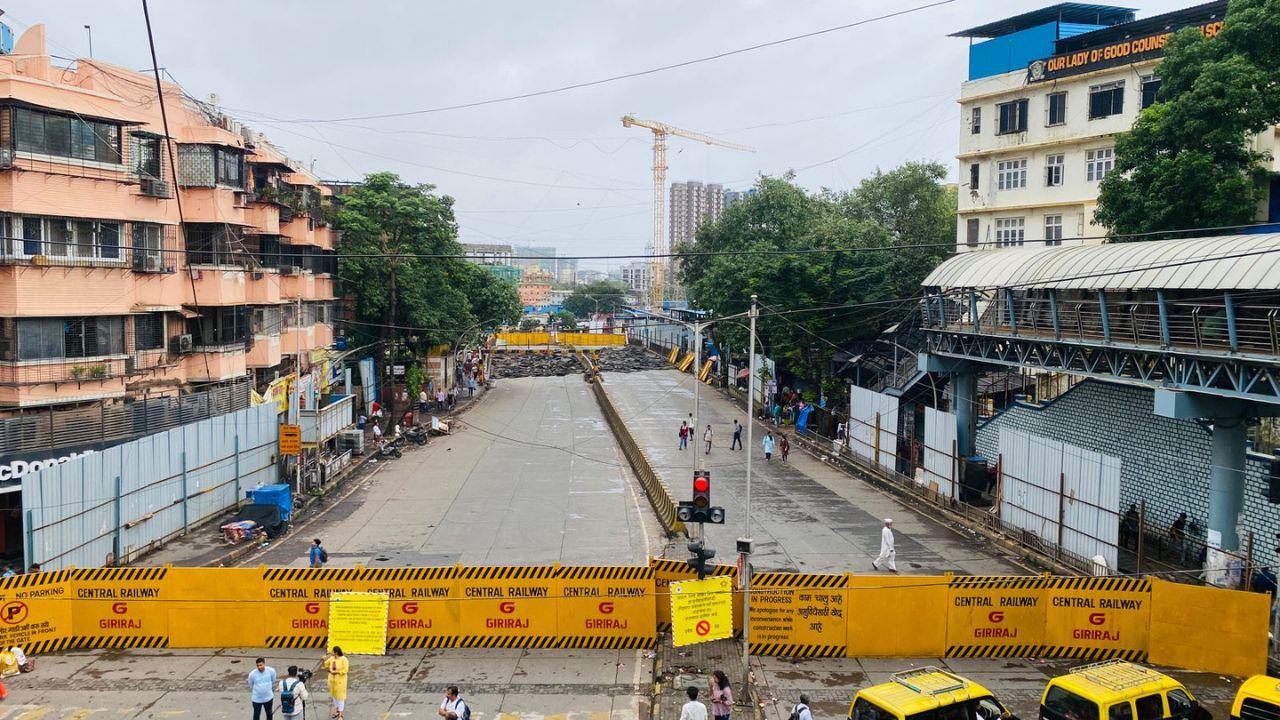
The 110-year-old Sion bridge will be closed to traffic for the next two years starting Thursday, August 1. The Central Railway has announced this closure as they undertake the demolition and reconstruction of the bridge. The demolition phase is expected to last four to five months. Originally scheduled for January 20, the bridge’s demolition was postponed due to the LS polls and various exams. Pics/ Shadab Khan and Kirti Surve Parade :: Reported by/ Sameer Surve
Updated On: 2024-08-01 09:20 AM IST
Compiled by : Sanjana Deshpande


Approximately 10,000 BEST bus commuters will be affected by the closure of the Sion bridge. The bridge currently spans 40 metres over the railway and will be extended to 51 metres to accommodate the new 5th and 6th railway lines. The reconstruction project is estimated to cost around Rs 51 crore, and the bridge is expected to remain closed until July 31, 2026.
Dr Swapnil Nila, the chief spokesperson of Central Railway, detailed the demolition process. Initially, utilities on the bridge will be moved, followed by the removal of the road surface and then the iron structure. This work will be carried out at night or during megablock times to minimize disruption to railway services.
Pedestrians can use the public foot-over bridge at Dharavi Dhobighat, which is 500 metres from Sion station towards the Matunga side, or another FOB towards the Kurla side, 350 metres from Sion station. These alternatives have been provided by Central Railway to ensure pedestrian movement is not severely impacted.
Several alternative routes have been suggested for vehicles during the Sion bridge closure. These include Sulochana Shetty Marg near Lokmanya Tilak Hospital, Chunabhatti to BKC Connector, and Chembur-Santacruz Link Road. Notably, two- and three-wheelers are not permitted on the Chunabhatti connector.
Light vehicles coming from Kurla via LBS Road and Sant Rohidas Road should turn right at Pehalwan Naresh Mane Chowk. They should then follow Sant Rohidas Road, Ashok Mill Naka, K.K. Krishnan Menan Marg, Kumbharwada Junction, Sulochana Shetty Road, and the Sion hospital Bridge as advised by the traffic police.
Heavy vehicles from Kurla should turn right before Pehalwan Naresh Mane Chowk. They should follow the route via Dharavi Kacharpatti Junction Signal, Dharavi Depot Road, Sion-Bandra Link Road, Mahim-Sion Link Road, Kemkar Chowk, Sant Kabir Marg, Sulochana Shetty Road, and Dharavi Railway Bridge Road to their destination.
Traffic from Western Express and Kalanar Junction should use Sion-Bandra Link Road, turn right at Dharavi T-Junction, then left at Kemkar Chowk, and proceed via Sant Kabir Marg, Kumbharwada Junction, and Sion Hospital Bridge to reach their destination. This route has been designated to manage the flow of vehicles during the bridge closure.
To manage the expected increase in traffic congestion, the Traffic Police have declared nine roads around Sion and Dharavi as no-parking zones. This measure aims to facilitate smoother traffic flow and reduce bottlenecks during the closure and reconstruction period of the Sion bridge.